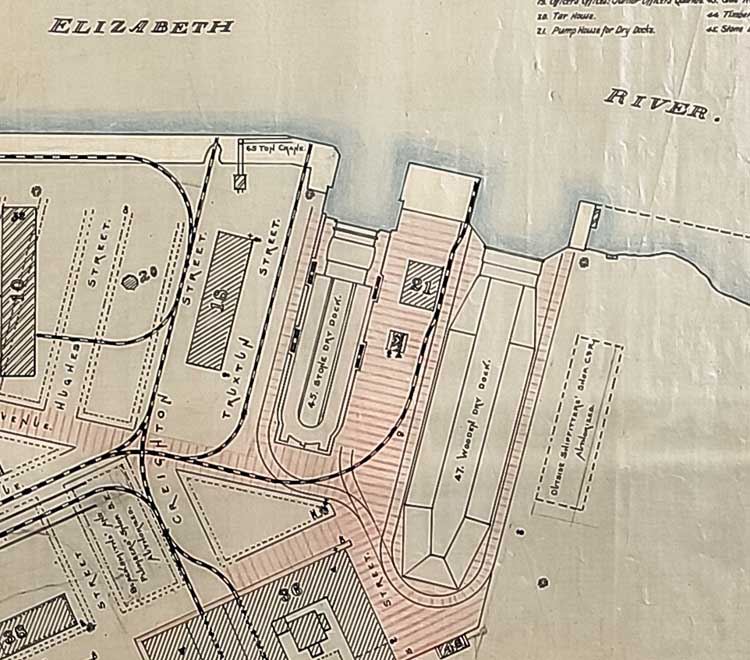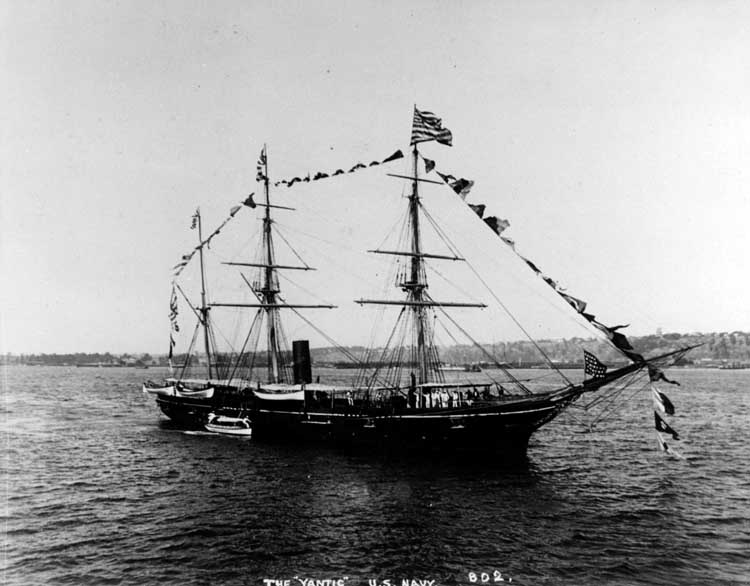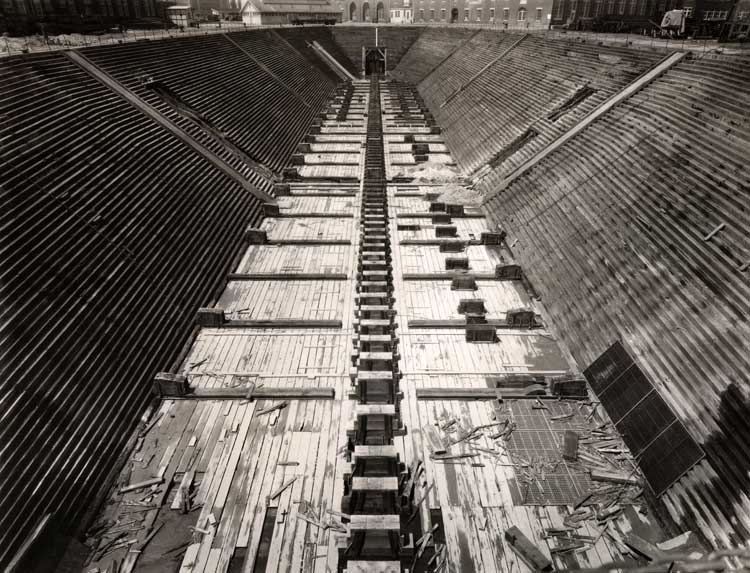
Marcus
W. Robbins, Historian & Archivist
Copyright. All rights
reserved.
Blog 68
New York Times - Norfolk, Va. September 19, 1889:
NORFOLK'S BIG DRY DOCK
IT COST THE GOVERNMENT A HALF A MILLION
OVER ALL THE DOCK IS 530 FEET AND WILL HOLD 8,000,000 GALLONS OF WATER
THE FORMAL OPENING
I'll circle back and share a few specific details from this newspaper story in a moment but first some background is in order.Dry Dock #2 at the Norfolk Navy Yard was at one time a wooden dock. Yes, I said wood. It was also first referred to as the Simpson Dock named for the company that constructed it and several other like it around the country.
As a structure it is begun in November of 1887 and was declared completed on September 19, 1889, with the docking of the USS Yantic. This new dock along with so many other Norfolk Navy Yard facilities upgraded in the later part of the 19th century firmly established Norfolk to be able to provide complex repairs and services upon the largest vessels in Uncle Sam's growing fleet.
I have made this statement before but it bears repeating again. "Any place can have a river berth or a pier to safely tie a vessel up to, but what sets apart a true shipyard is its ability to perform dry docking. This location, being the Norfolk Navy Yard along the Elizabeth River has the ability to take any vessel of Uncle Sam’s Navy out of its natural element (water) and allow it to become docked (dry) so craftsmen may perform repairs to the underwater hull sections and components."
This new dock was established just to the south of the original Gosport Stone Dock and in time causes that structure's operational name to become known as Dry Dock #1. The new Simpson Dock will over time become known as today's Dry Dock #2.
Photo #1 ~ Location of New Dry Dock #2
(Portsmouth Naval Shipyard Museum (PNSM) Collection, Station Map of June 30, 1889)Today we are all about staying loyal to our current modern day motto of "Service To The Fleet", so what about the USS Yantic? Well, Yantic was a wooden-hulled vessel that served the Navy from 1864 until 1930 in various roles from Civil War service to use as a training ship. In the year of 1889 there must have been a need to look below the waterline and perform maintenance and repairs, thus a docking.
Photo #2 ~ IX-32, (ex-USS) Yantic
(Navy History and Heritage Command Collection, #69215 taken circa 1921)Frank Leslie's Weekly Newspaper - November 2, 1889:
NORFOLK'S NEW DRY-DOCK
The formal opening of the new Simpson Dry-dock at Norfolk (Va.) Navy Yard, which occurred a few weeks since, attracted a large crowd of visitors, including a number of prominent officials from Washington and elsewhere. The first vessel to steam into the dock after it was flooded, was the steamer Yantic, handsomely dressed with bunting in honor of the occasion. The dock is of large dimensions, and its construction adds materially to the facilities and advantages of the Norfolk Navy Yard. Its cost to the Government was $495,737.
So circling back to that New York Times story we find these fascinating details about our new wooden dock. It took precisely one hour to fill the dock to a depth of 23 feet 9 inches of water. It took another hour to lighten the ballast of water within the caisson gate and swing it out of the way. After this the Yantic entered the dock with the Navy Yard band playing upon her deck both popular and patriotic strains. At 12:04 she settled down and the caisson gate was swung to behind her.
As the story details the great number of private and naval dignitaries that spoke at the ceremony, what always fascinates me are construction details. The dock was able to be emptied of water in the short time of 1 hour and 5 minutes (8 million gallons of water). The foundation of the dock is piling, over which to the depth of three feet is a solid bed of concrete. Above the concrete floor, the dock is of wood and almost a million feet of Georgia heart pine and almost as much other lumber was used in its construction. The dock was completed in just twenty months from the time of the signing of the contracts.
Photo #3 ~ Dry Dock #2 Looking West
(Historic Norfolk Navy Yard Photo Collection, circa early 1930's)Over the many decades of service our Dry Dock #2 was rebuilt of total concrete beginning in 1933, and again received major work to both deepen and widen the dock between the years of 1964 to 1966 to support submarine service work. This is basically the configuration you see today, yet plans are being made for yet even more upgrades and improvements to take us into the 22nd century and beyond.
The site of Dry Dock #2 is now well into its second century of continuous service for the United States Navy here at "America’s Shipyard" because –"history matters".
Norfolk Navy Yard Table of Contents


